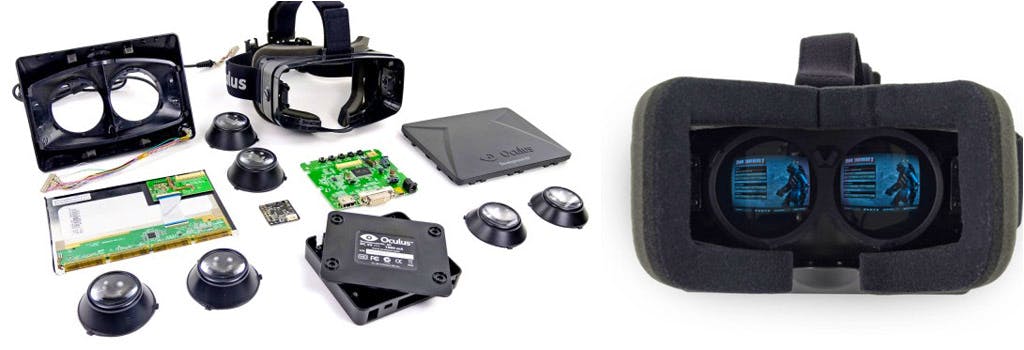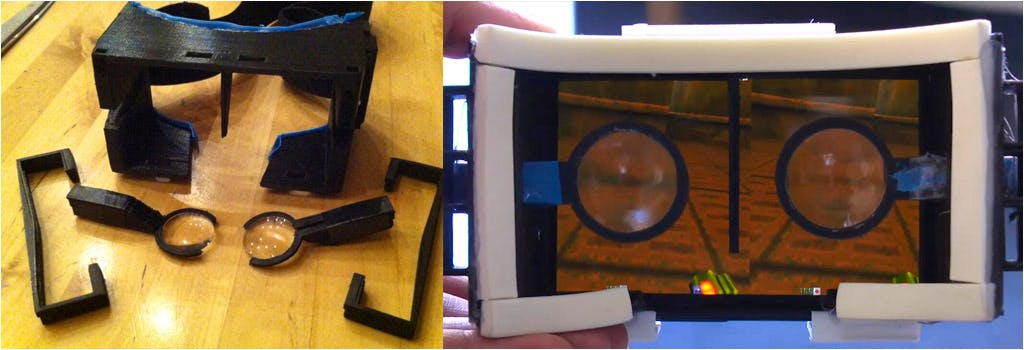
Tech Exploration
Virtual Reality isn't new, but it's improving almost at the same rate as graphics processors. Headsets are getting smaller, more mobile, and more powerful. 5G has also contributed to the advancement in V/R technology. Most people will have their first VR experience through gaming or entertainment, but both VR and AR are breaking into new verticals as the technology accelerates. Manufacturing, healthcare, education, and even retail industries are benefitting from this rapidly emerging technology. In 2014 Facebook purchased Oculus VR for 2 billion and released their first Oculus Rift in 2016. Before its release, I had experience with the Open Dive and the first two Oculus development kits. One of my previous CEOs was really into tech, so we purchased a few gaming PCs, the first Oculus Rift, and the HTC Vive. I currently have my eyes on the Oculus Quest 2, but there are a few other models available.
The user could be anyone, a hardcore gamer, tech-savvy, a grandmother, or someone who does not care. VR will impress them. Why? It is unbelievable. We have come so far, most of the technology had already existed, but the graphics weren't good enough to support it. Initially, there were some downsides. VR wasn't working incredibly well with the human eye, often resulting in a screen door effect. It took me quite a while to adapt without getting motion sickness with the dev kits, and I am the type of guy who never gets motion sickness. Fortunately, we are now experiencing resolution in 4k, with 8k on the horizon. We also have inside-out tracking, which means we no longer need sensors surrounding the player(similar to what the HTC Vive required). The most anticipated breakthrough is Apple's VR/AR glasses with 8K resolution, which do not require a computer or a phone.
Total Immersion
With film, you are limited to a camera's view, but with video games, the entire environment has been created; this is the most crucial factor when it comes to Virtual Reality. Video games have advanced quite well alongside the technology that supports them. Regardless if it is a computer or a video game console, graphics are becoming more and more realistic.
In order to create such an advanced level of immersion, a few things need to occur. To create a 3D display, you need to simulate the left and right eye, requiring a convergence point. Our eyes don't look straight ahead; they meet in the middle; this has to be simulated. Try to imagine two high definition phones, one for your left eye and one for your right. From that point, you use lenses to look into the displays as opposed to at them. You also need a video game, application, video, or experience that supports VR Goggles' use.
The monitor will display the screen, split down the middle while you view the same picture/feed on both sides. Right now, I am wearing glasses, not only because I am a nerd but because I have been looking at digital displays for over 25 years. Regardless, I can see my glasses on my face, I can see through them, see the frame, and I can see outside of them. Using modern VR goggles, once you put them on, you only see the environment in which you are placed. You cannot see the goggles, the lenses, or the real world around you.

VR Evolution
In 2014 we saw outside-in tracking, external sensors, markers, cameras, or lasers, which had to be set up around the room to identify the user and map their movement in the environment. Around 2015/16, we saw the development of inside-out VR, which required no room setup or external devices. In 2017 the stereo fisheye camera was developed for more accurate motion tracking. Currently, we are seeing advanced iterations of inside-out in addition to room-scale VR, which detects objects, augments boundaries, and provides an added level of safety. In the future, I hope to see limitless movement and more advanced safety protocols. Either way, I cannot wait to build something using VR. Fortunately, I know Maya and the Unity Game engine is fairly easy to use. I have just a few other projects before I can get my hands on a new Oculus rig and start exploring Unity.

3D Printing VR Goggles
I 3D printed a project known as the Open Dive, an open-source project and runs on the Unity Game engine. It is quite similar to the original Oculus Rift though nowhere near as powerful, limited primarily by your cellphone GPU. All you need is a pair of lenses, a strap from a set of snowboard goggles, and a smartphone. Everything else is 3D printed. It has a wow factor very close to that of the original Oculus.
